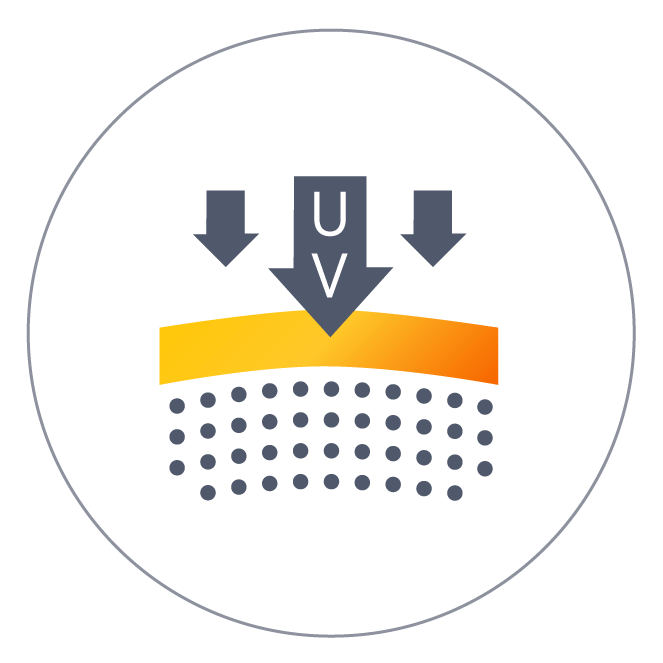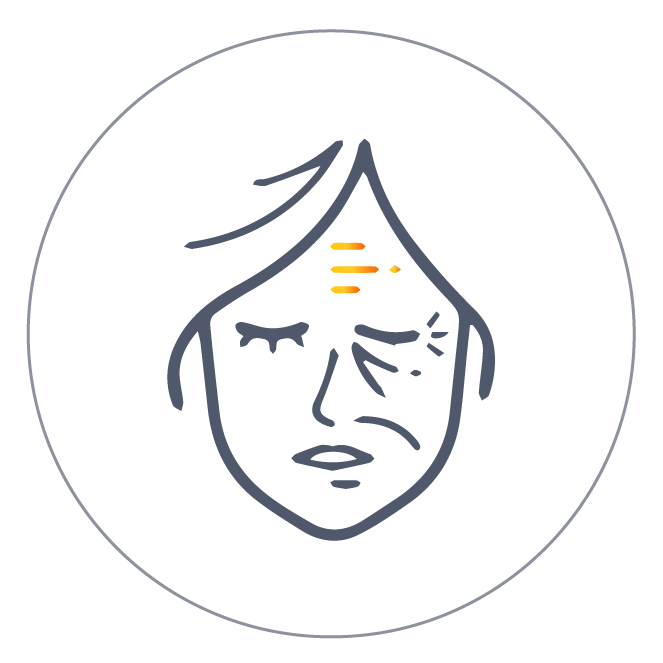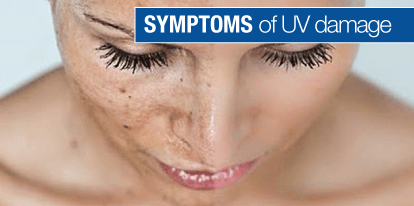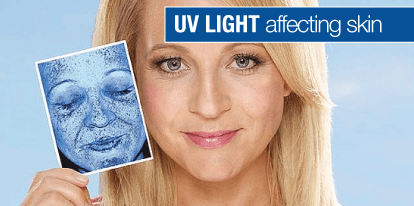-




Learn about intrinsic protection
Sun Damage & Pigmentation
The sun’s UV rays are one of the most significant causes of premature skin aging. Your genes play an important role in determining how well your skin can naturally cope under the strains of the sun.

Pigmentation

Skin Damage from UV

Deep Furrows
Visible signs associated with Sun Damage & Pigmentation
Did you know?
2 in 5 people
Have a genetic variation that affects their skin’s UV defences.

About this category
How does UV light age our skin?
How well are you intrinsically protected against the sun?
Exposure to ultraviolet (UV) light from the sun accounts for 90% of the symptoms of early skin aging, skin damage, and skin cancer. Every time your skin is exposed to UV light, skin damage occurs. The cumulative effect of repeated sun damage causes epidermal DNA damage, persistent inflammation, and oxidative stress, negatively affecting the health and appearance of your skin.
What your genetics have to do with it
Our genetic predispositions play an important role in determining how your skin can naturally cope under the strains of the sun.
The SkinDNA™ Test can reveal if your skin has a greater or lesser natural genetic solar protection factor, and based on your results can provide you with a unique, enhanced skin care protection strategy that is specially designed to provide the utmost protection for your skin based on your genes.
UV Skin Penetration

A photochemical process converts the energy of UV Light into small, harmless amounts of heat. If the energy is not broken down this can lead to the generation of sun derived free radicals.
About UV Light
Ultraviolet Light

UVA Rays (known as the ‘aging’ rays)
Are a form of radiation that has very little immediate visible effects. The effects of UVA rays often do not become apparent until years down the track often after the damage has already been done.
Its spectrum is strong enough to bypass the top layers of skin and damage the deeper layers know as the dermis. It is predominantly these rays that cause skin to prematurely age.
UVA rays mostly come through when the sun is at an angle generally between 8am – 10am and 2pm – 6pm. These rays become magnified when cloudy or overcast and when reflecting through glass such as when driving or near windows.
UVB Rays (known as the ‘burning’ rays)
are a form of radiation that has a great deal of immediate visible effect. Unlike UVA rays its spectrum isn’t strong enough to travel into the deeper layers of skin therefore most of the damage is done on the superficial layers taking the form of sunburns, pealing, swelling, pigmentation and browning of the skin. UVB rays are most predominant when the sun is directly shining down between 10am -2pm.
Background Science
Genes Tested
SkinDNA™ Designated Descriptors
Gene s600851 & s600852
Melanin Production
Involved in the production of Melanin. A process important for protecting the skin against the sun.
Gene s600623
UV Repair
Repairs genetic damage caused by UV exposure.
Gene s600442 & s600443
Photo Defense
Functions in breaking down DNA photoproducts.
Gene s600931
UV Radical Protection
Responsible for repairing DNA mutations caused by 8-oxo- G radicals.
Every time the skin is exposed to UV light, some damage occurs and the cumulative effect of that repeated damage is epidermal DNA damage, persistent inflammation and oxidative stress.

Repeated exposure to ultraviolet light (UV radiation) from the sun accounts for nearly 90% of symptoms of early skin aging, skin damage and skin cancer. Oftentimes the harmful effects of the sun are a greater contributor to skin aging than all other factors combined, including the intrinsic aging of skin cells.
Symptoms of sun damage include: texture changes (coarse wrinkling and yellow discoloration), blood vessel changes (broken capillaries and Telangiectasias), pigment changes (age spots, brown spots, freckling), skin bumps (Kerasotes) and skin cancer. Sun damage can take years to surface often when the damage is too late.
“Your genes play an important role in determining how well your skin can naturally cope under the strains of the sun.”
Consistently preventing damage to skin caused by the sun’s UV rays should be the single most important aspect of your skin care strategy. Proper UV protection may not only help prevent photoaging and further damage to the skin but can also facilitate the reversal of some of the existing signs of aging.
Glossary
Not sure what some words mean?
8-oxo-G radical
8-oxoG radical is considered to be one of the worst types of free radical species. This radical is generated by exposure to ionizing radiations such as UV light.
8-oxo-G radicals can cause harmful mutations within the DNA structure6 and can ultimately affect the functioning of crucial genes that play vital roles in collagen synthesis, protection and other central duties.
Melanin
Pigment (color) found in the skin. Melanin is essential in protecting the skin from the sun.
The release of melanin helps absorb and breakdown the sun’s harmful UV rays and UV-generated free radicals.5 The reason some people are darker than others is because of the amount of melanin their body naturally produces.
The more efficient the body is at producing melanin the more your skin is able to withstand (to a degree) the suns UV rays. Pigmentation has been widely viewed as a photo-protectant and research has shown that darkly pigmented skin is at a lower risk of photo-carcinogenesis than fair skin.
Photoproducts
A form of DNA damage, they are chemical reactions that are produced by the action of light.
They are formed mainly from UV light omitted by the sun or by artificial means such as a Solarium. Photoproducts can account for one quarter of all DNA damage.

Copyright 2018. All rights reserved.
Made with [icon name="fa fa-heart" color="#e51b23"] by SkinDNA.
Test Categories
White Label
Contact
